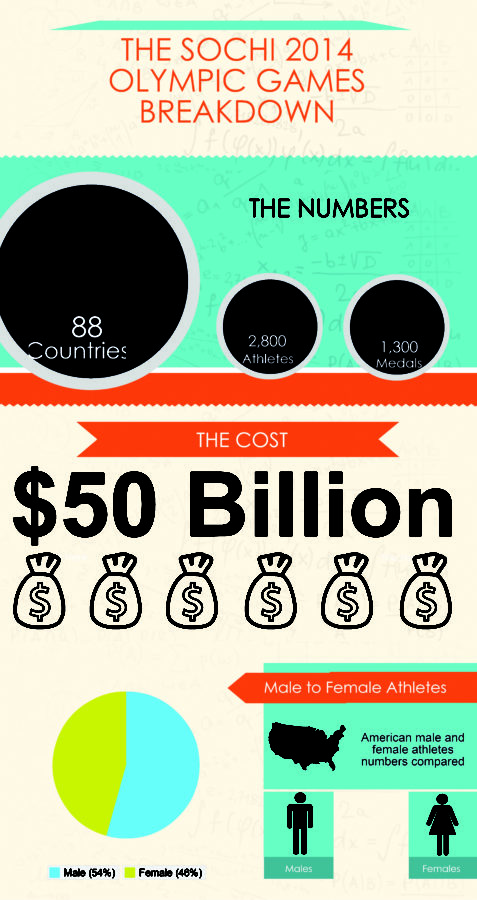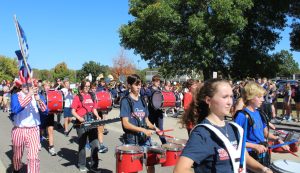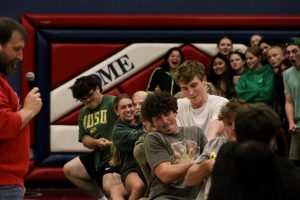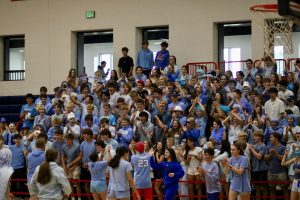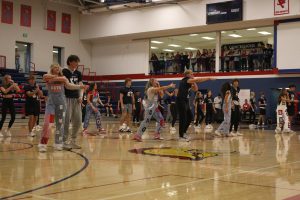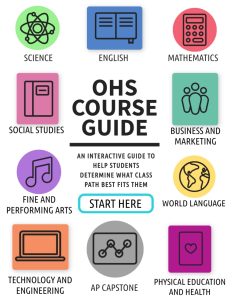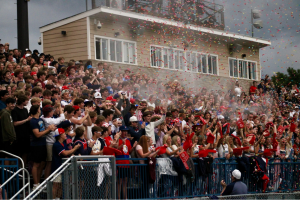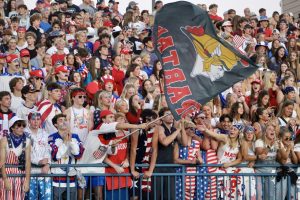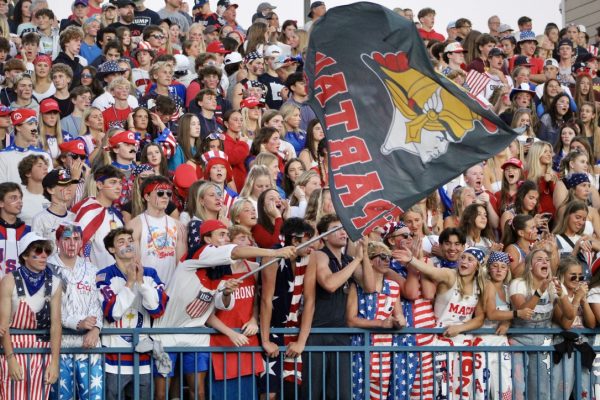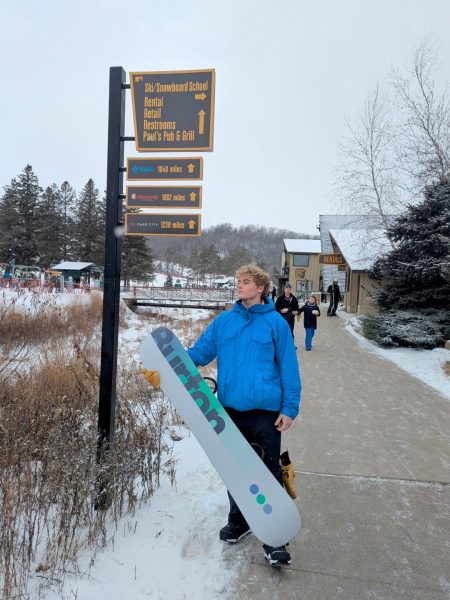Russia wins Sochi medal count in 2014
March 18, 2014
The 2014 Winter Olympics in Sochi, Russia were filled with excitement and enthusiasm from athletes and fans from Feb. 7 to Feb. 23.
There were 15 different sports played at the games, with 98 different events. Sports included Ice Hockey, Figure Skating, Luge, Skeleton, Curling, Cross Country, Ski Jumping, Alpine Skiing, Snowboarding and several others.
Including all of the results, the official Olympics 2014 Sochi website reported that 88 nations and over 2,800 athletes participated in this Winter Olympics.
“The Olympics allows interaction between countries in a non-political realm and can aid in easing tensions and building reactions,” social studies teacher Michelle Neal said.
The first Winter Olympics was held in Chamonix, Scandinavia in 1924. According to the History Channel, “Of the nearly 300 athletes, only 13 were women, and they only competed in the figure-skating events.”
Other locations that were in the running for the 2014 Olympics included Salzburg, Austria and Pyeongchang, South Korea.
“The location is chosen by the Olympic Committee many years in advance so [that] the city can prepare” Neal said.
The expenses of the Winter Olympics were quite high this year. According to National Geographic the estimate is around “$50 billion…The Sochi Olympics have cost more than any games before them.”
Many students at Orono followed the 2014 Winter Olympic Games and favorite athletes. “I enjoy watching snowboarding, skiing, and curling. My favorite athlete is Justin Reiter, a snowboarder,” senior Jacob Sterling said.
“I follow who wins the medals,” freshman Nora Luetmer said.
However, some students prefer the Summer Olympics to the Winter Olympics. “The summer Olympics include more sports I understand and enjoy playing,” senior Stephanie Knight said.
Many students at Orono compete in the sports played at the Winter Olympics. Senior Jacob Sterling is an avid and talented snowboarder of 10 years and skier of 4 years. He has been competing at an regional amateur competition level for years, but 3 years ago began racing in a professional series.
“In the professional series I race against some of the best riders in the world from countries like Canada, Australia, and Japan,” Sterling said.
Also involved in a winter sport played at the winter Olympics is senior and Nordic team captain Lydia Winkels. “Nordic takes an enormous amount of time and dedication, and then it all comes down to the race…I can’t even fathom the drive that Olympic skiers have,” Winkels said.
Here is a recap of some of the most popular events:
Figure Skating:
Ice Dance: Americans Meryl Davis and Charlie White won the gold medal, becoming the first Americans to do so.
Team Figure Skating: Ekaterina Bobrova from Russia took gold.
Alpine Skiing:
Team U.S.A.’s Bode Miller earned bronze in the Men’s Super G and American Julia Mancuso earned a bronze in the Women’s Super Combined. American Ted Ligety won gold in men’s giant slalom. He made U.S. history by being the first American man to win 2 gold medals in alpine skiing. His other gold was won at the 2006 Olympics in the combined event.
Snowboarding:
U.S athletes Jamie Anderson, slopestyle, and Kaitlyn Farrington, ladies halfpipe, both received gold medals in their respective events.
Hockey:
Ice hockey has been a very exciting event for the Men’s Olympic team. On Feb. 15, U.S won 3-2 over Russia as team hero TJ Oshie, a Warroad Minn. native, scored four of six goals in a shootout to win.
Luge:
Germany dominated this event and won gold in the team relay. Russia won a silver medal, while the U.S. team came in sixth place.
Full details of every single event can be found on the official Olympics website for Sochi 2014. Also available on this website is every athlete and his or her background.

















































